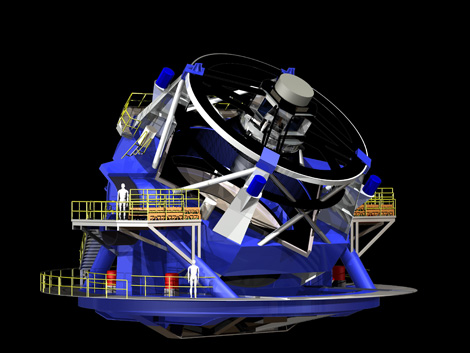Astronomy’s To Do List
Every ten years or so, the nation’s astronomers put their heads (actually committees) together to come up with a collective wish list for the projects they’d like to see funded over the next decade. Politicians tend to like this method of setting scientific priorities, as it saves them from choosin…

Every ten years or so, the nation's astronomers put their heads (actually committees) together to come up with a collective wish list for the projects they'd like to see funded over the next decade. Politicians tend to like this method of setting scientific priorities, as it saves them from choosing, and Congress and the White House generally try to follow the plan, like parents working down a Christmas list.
The latest of these "decadal surveys" was just released today by the National Research Council, and if it comes to pass, astronomers should have plenty of fun new tools to play with by 2020.
Topping the wish list are two multipurpose survey instruments: a $1.6 billion spacecraft called the Wide-Field Infrared Survey Telescope (WFIRST), and a $465 million ground-based observatory, to be built in Chile, called the LSST, for Large Synoptic Survey Telescope. Both are good at multiple jobs, and both will address two of modern astronomy's most pressing questions: determining the nature of "dark energy," and finding habitable planets around other stars.
I've heard a number of presentations on the LSST over the years, and have always been mystified as to why the National Science Foundation, NASA, or somebody else didn't rush out to complete it. It's astronomy's Everything Machine, and there are few things it won't do. The telescope is a little over 8 meters, not the biggest in the world, but with a wide field of view. More importantly, it surveys the entire sky, with exquisite sensitivity, every three days, which is truly revolutionary. In the past, comparable surveys have taken months or years to cover the whole sky. The LSST will do that twice a week. I've heard it called astronomy's Google in terms of the sheer volume of data it will produce, and in fact the information company is a partner in the project.
Among many other tasks, the LSST should be great at picking out Earth-threatening asteroids, which will stand out as streaks of light against the non-moving stellar background.
I can't wait to see this thing built.
Read the full decadal survey report here.